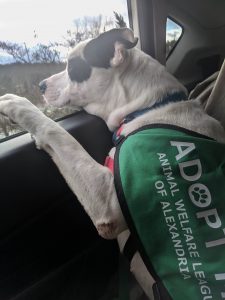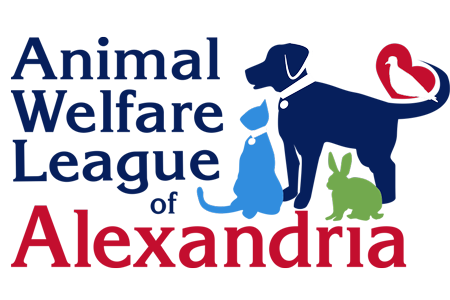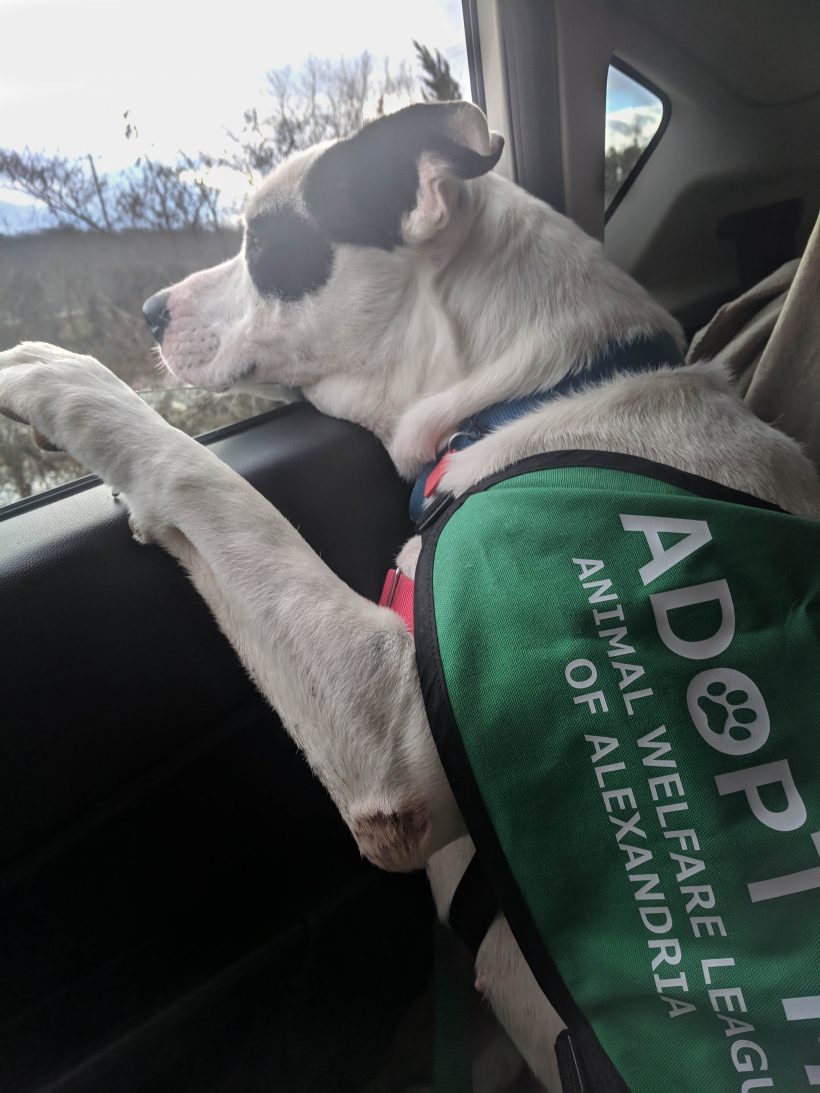Unable to adopt? Fostering offers a variety of ways to get some ‘quality pet time’

Tyler the bulldog mix was going downtown. Down to Old Town, to be specific. He had donned an “Adopt Me” vest, was fitted for a harness and leash and was setting off with an Animal Welfare League of Alexandria (AWLA) volunteer for a “foster field trip.”
The day out included stops at Union Street and Market Square, where Tyler made a quick stop to check out the fountain. He met plenty of people, many of whom paused to remark on his good looks, and the volunteer took the opportunity to promote him as a pet.
The romp through Old Town was a key stop on Tyler’s road to adoption. Along with meet-and-greet time, field trips provide animals with a change from the shelter environment and a chance to practice their social skills and also allow volunteers to gather information to pass along to potential adopters, said Maddie Bernstein, AWLA Community Programs Coordinator. The energy expended on these adventures means that these pups will return to their kennels refreshed after a mentally and physically enriching day. Some of them even learn new skills. A Doberman mix called Emma balked at getting into the car to head out on her field trip, and she had to be coaxed up a ramp to the car with hotdogs. But when it came time to head back to the shelter, she hopped right into the car, Bernstein said, as if she’d been doing that her whole life.
Field trips are just one way the shelter’s 201 volunteers help Alexandria’s animals find new homes. Many pets at the shelter need the special care and enrichment fosters can provide, said Foster Manager Arielle Wait, who has fostered more than 300 animals herself. Neonatal duty, for example, requires a specially trained corps of fosters, who take care of orphaned puppies and kittens too young to be adopted. These young animals need bottle-feeding as often as every two hours, along with assistance eliminating waste and maintaining body temperature.

Animals with significant veterinary needs may also benefit from extra TLC from fosters. Dogs undergoing treatment for heartworm may require months of recovery, and animals recovering from surgeries heal most successfully in a home environment. Animals with behavioral issues, especially cats overwhelmed by the bustle of the adoption floor, often benefit from a stay in a home, where they can learn to coexist with people and perhaps other pets — and be observed to collect valuable information for the shelter’s adoption staff.
“An animal’s behavior in the kennel is not always a good indicator of what kind of pet they might be,” Wait said.
Fostering animals at the AWLA requires orientation and training sessions, Wait said. A foster’s interest should be in helping an animal, she said, which often means letting animals move on to their new families after weeks or months together. All food and supplies for the foster animals are provided by the AWLA.
Some shelter animals enjoy a shorter-term foster experience in the form of foster “sleepovers” — overnight or multi-night stays at the homes of volunteers. Recent research on dogs at several shelters in the United States found that the animals’ cortisol levels — which can reflect stress — dropped significantly after only one night in a foster home. The research indicates that these sleepovers acted much like weekends do for people, allowing for rest and recharging.
One of AWLA’s fosters, commercial airline pilot Dave Fawcett, often shows up at the shelter on his days off to pick up a dog for the weekend or even a week. He’s been making great progress with a boxer mix named Steele, an affectionate dog who can get overexcited around other dogs and children.

Instead of touring the city, Fawcett runs Steele around a high-school field for exercise before the two of them crash at his Old Town home. “When I turn the lights out, he knows it’s bedtime and heads up the stairs,” Fawcett said. “He’s very quiet and calm and likes to curl up with me to sleep.”
Like other fosters, Fawcett keeps a “report card” to be used by shelter staff, answering such questions as: How did he react to receiving a treat to chew on? Did he growl if others approached his food bowl? How did he do on a walk? Fawcett says Steele’s consistent training and lower stress levels upon returning to the shelter are enhancing his chances for adoption.
At one point, foster volunteer Jodi Horton was caring for a mother cat and her five newborn kittens in her spare bathroom. All six eventually found new homes once they were ready for adoption. They were some of the more than 20 cats and kittens that Horton has fostered on behalf of the AWLA, often because they were too young for adoption. Her permanent family now consists of four cats, three of them former fosters. “Fostering just brings me so much joy,” Horton said. “I can’t say that I’ve quite figured it out though — sometimes I just have to keep them.”
Want to make a difference in the lives of Alexandria’s Animals? Learn more about volunteering and fostering with the AWLA!
In order, photos courtesy of AWLA Volunteer Mike, M. Davis and Jodi Horton.
This story was originally printed in the Alexandria Pet Gazette on February 27.
Get the latest animal news right to your inbox!


